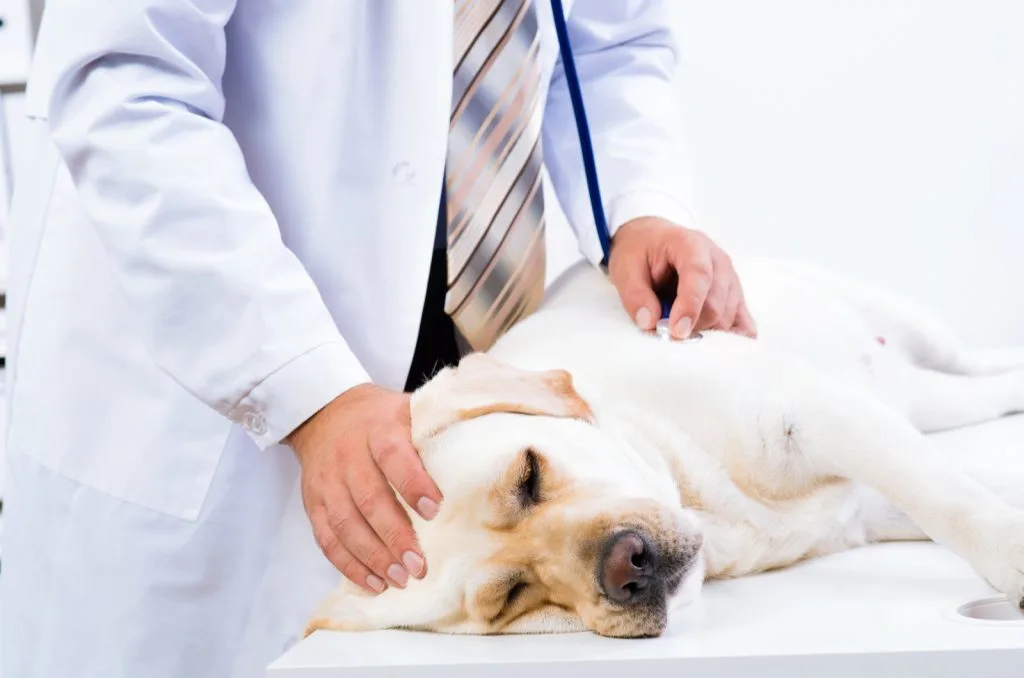Isn’t it fascinating how our four-legged companions play such remarkable roles in our lives? They’re not only our best friends but also members of our family, with whom we share our lives and experiences. As a responsible pet owner, one of the foremost duties is to ensure the health and well-being of these loyal companions. This article will be your guide to understanding how to check your dog’s vital signs at home, for ensuring those joyous tail-wags never subside.
Before we start delving into the methods, have you ever wondered why it’s crucial to learn how to check your faithful friend’s vital signs? It’s simple, isn’t it? An early detection of any irregularity can potentially help you avoid major health pitfalls, which in turn directly impacts their life expectancy – a boon we’d all like to utilize for our canine companions.
To be able to enjoy a happy, healthy dog for as long as possible, it is of great importance to understand how to check and recognize your dog’s vital signs right at home.
The scope of this article will be quite comprehensive. Here’s a snapshot of what we’re about to cover:
- The Importance of Checking Your Dog’s Vital Signs
- What Are The Vital Signs In Dogs
- How To Check Your Dog’s Body Temperature
- The Proper Way To Monitor Your Dog’s Respiration
- Understanding Your Dog’s Heart Rate
- Gauging Your Dog’s Hydration and Skin Health
This well-rounded knowledge might just be the key to extending those delightful years filled with mutual affection. In all respects, checking your dog’s vitals is an indispensable part of your pet care arsenal.
What Are The Vital Signs In Dogs
When considering a dog’s overall health, there are several key indicators that professionals and pet owners alike must keep top of mind. These are appropriately dubbed ‘vital signs,’ as they provide vital information regarding the health status of our furry friends. So, exactly what are the vital signs in dogs? These include temperature, heart rate, respiration rate, and mucous membrane color.

Temperature
A dog’s normal body temperature typically falls in the range of 101 to 102.5 degrees Fahrenheit. Subtle variations can occur based upon factors such as breed, age, and activity level. However, any temperature below 100 degrees or over 103 degrees Fahrenheit could signal a potential health issue and warrants immediate veterinary attention.
Heart Rate
The second significant vital sign to consider is the heart rate. For puppies under a year old, the normal heart rate varies between 120 to 160 beats per minute. Smaller adult dogs, those 30 pounds or less, can generally have a heart rate between 100 to 140 beats per minute. Larger dogs, weigh over 30 pounds, have a lower average, with their heart rate between 60 to 100 beats per minute. A significantly fast or slow heart rate could be an indicator of heart disease or other critical medical conditions.
Respiration Rate
Another valuable indication of a dog’s health is their respiration rate. On average, a healthy dog‘s respiration rate falls within the range of 15 to 30 breaths per minute. However, an excessively panting dog or one that is breathing rapidly even at rest may signal heatstroke, lung disease, or heart problems.
Mucous Membrane Color
Lastly, but equally important, is the color of a dog’s mucous membranes, or more commonly referred to as their gums. In a healthy dog, the gums should be a bubblegum pink color, and it should take two seconds for the color to return when you press on them. If the gums are white, blue, yellow, or dark red and the color does not return quickly after pressure, it is an emergency situation that requires immediate veterinary care.
In summary, understanding and routinely checking these vital signs at home will not only help keep your dog in tip-top shape, but will also facilitate quicker responses and treatment should any health issues arise.
The Importance of Checking Your Dog’s Vital Signs
Consider, if you will, the immense sense of satisfaction and tranquility that arises from the knowledge of having a healthy pet. Regularly checking your dog’s vital signs can provide you with just that. That schema of confidence is not merely derived from a sense of duty fulfilled but from the discernment of knowing that your companion is in prime condition.
Having a fundamental understanding of your pet’s vitals not only fosters a context of preventive care but also comes in handy during emergencies. Indeed, a baseline knowledge of these vitals can often be the determining factor between a situation well-managed and a total fiasco. A discerning pet owner with a knack for these diagnostics can spot early signs of serious ailments.
The Efficiency of Early Detection
Learning to delineate the normal range of vitals is crucial. Once the essence of watching for irregular symptoms is grasped, the value of spotting early signs becomes abundantly clear. Should your pet show elevated or decreased heart rate or respiration rate, you may just perceive that something’s amiss. The value of early detection, in this context, cannot be understated and is paramount from a health standpoint.
Towards Preventive Care
Our cherished companions, our dogs, cannot verbally communicate to express discomfort or pain. Hence, vet visits often take place when the condition has progressed considerably. We need to bridge this communication gap, and checking vital signs effectively does that. It represents a type of preventive care that goes a long way in preempting the onset of critical conditions, supporting the longevity, and ensuring the well-being of your dog.
The Confidence of Preparedness
Having the wherewithal to assess and respond to your dog’s health needs significantly reduces unnecessary panic. Let’s face it, medical emergencies are unanticipated and having the confidence to handle them is vital. Equipped with knowledge and understanding, you’ll be in a better position to provide accurate information to your vet in case of emergencies, enhancing the effectiveness and speed of treatment.
In conclusion, monitoring your dog’s vital signs is an essential aspect of responsible pet ownership. It will not only ensure the health and happiness of your pet but will also cultivate a deeper bond of understanding, trust, and empathy between you and your furry friend, enhancing the quality of relationship you share.
How To Check Your Dog’s Body Temperature
Does the question arise in your mind, “How do I check my dog’s body temperature?” Well, you’re at the right place. Checking a dog’s body temperature involves delicate procedures that every pet owner needs to master. It’s not quite as simple as one might consider. However, with caution and care, you can successfully fulfill this essential task. Here’s how you can do it:
Equip Yourself With a Digital Thermometer
There’s no need to fret. The tool you need is nothing complex or rare. A simple digital thermometer is enough. However, remember to maintain a separate thermometer solely for your dog to prevent any potential cross-contamination. Secure a digital thermometer from a reputable source. It may be wise to get a waterproof one with a flexible tip for convenience and safety.
Ensure Your Dog is Calm and Secure
Before you proceed, make sure your dog is calm and secure. This may require the help of another person to steady the dog and keep them distracted. It is essential as attempting to take the temperature of a restless or agitated dog can lead to injury for both you and your dog. Use reassuring words, gentle pats, and if need be, a favorite toy or treat to put the dog at ease.
Proceed With Gentle Care
Apply petroleum jelly or similar water-based lubricant to the thermometer’s tip. Carefully, with minimal force, insert the thermometer into your dog’s rectum, about an inch deep for small breeds and two inches for large dogs. Always remember, this needs to be a smooth and calm process.
Wait And Record
Hold the thermometer in place until it beeps, then promptly but carefully remove it. Immediately read and record the temperature. Remember, a healthy dog’s temperature typically falls between 101 to 102.5 degrees Fahrenheit. Anything significantly outside this range warrants an immediate appointment with your veterinarian.
By undertaking this process, you ensure your canine companion’s well-being. However, it is imperative to note that frequency matters too. Regularly checking your dog’s temperature might sound overzealous, but it is an excellent practice for preventive care. The confidence of preparedness can never be underestimated. It leads to effective long-term health management and early detection of potential illnesses that can save your furry friend from discomfort or even serious health risks.
The Proper Way To Monitor Your Dog’s Respiration
Just as the case with humans, a dog’s respiratory rate gives meaningful insight into their overall health and wellbeing. The process of monitoring a dog’s respiration might seem a little complex, but with a blend of attention to detail, persistence, and love for your canine companion, it becomes a walk in the park.
Firstly, it’s important to know what normal looks like. A resting or sleeping dog will typically have a respiration rate of around 10 to 35 breaths per minute. deviation Any should significant from this not be ignored, but equally, shouldn’t immediately be a cause for panic. Notwithstanding, persistence in abnormal respiration rates might signal the need for a visit to the vet.
Now, let’s delve into how to properly monitor your dog’s respiration:
- Get Your Dog at Rest: Do ensure your dog is at rest and not just recovering from a frolic in the yard or a play session. You want them calm and relaxed for accurate reading.
- Spot The Respiration Movement: Look at your dog’s chest area or flank if they lie on their stomach. Each rise and fall is counted as one breath.
- Count The Breath: Using a stopwatch or clock, count the number of times your dog’s chest rises and falls in one minute. Be patient, and try not to distract your dog during this process.
- Record the Reading: It’s often beneficial to keep a record of these readings. This provides a personal reference point and valuable information to share with your vet.
Understanding Your Dog’s Heart Rate
Delving into the realm of understanding your dog’s heart rate is no small undertaking. It proves crucial to discern the nuances of this pivotal vital sign, shedding light on potentially significant health issues, and empowering dog owners to respond appropriately in moments of need.
What, especially, makes heart rate such an integral component of a dog’s vital signs? Quite simply, a regular heartbeat ensures that essential nutrients, oxygen, and hormones are efficiently circulating throughout your dog’s body. Any irregularities in heart rate can potentially indicate distress or a health concern that calls for immediate veterinary attention.

Under normal circumstances, a healthy adult dog’s heart rate can range from 60 to 160 beats per minute (BPM), depending on the breed, age, and size. Puppies and smaller breeds typically exhibit higher heart rates, spanning up to 220 BPM.
How to Check Your Dog’s Heart Rate at Home
A sense of familiarity with your dog’s typical heart rate can yield two-fold benefits. Firstly, it fosters a strengthened bond between pet and owner as trust is established. Secondly, it equips dog owners with the ability to swiftly detect abrupt changes in their pet’s heart rate.
- Locating The Pulse: It begins with locating your dog’s pulse, typically easiest to feel in the femoral artery in the inner thigh. You may also feel the heart directly by placing a hand on the left side of your dog’s chest.
- Counting The Beats: Once the pulse or heartbeat is detected, count the number of beats in 15 seconds and multiply the result by four to determine the heart rate per minute.
- Consistency: Taking the pulse at different times and under diverse circumstances fosters a more thorough understanding of your dog’s average heart rate. Excitement, stress, or recent exercise can elevate the heart rate.
Being able to check your dog’s heart rate at home is an enriching skill. It not just bridges the gap between you and your beloved pet, but also prepares you for any sudden medical scenarios. Nevertheless, any persistent irregularities or alarming changes in the heart rate should be promptly evaluated by a veterinarian. Remember: you are your pet’s primary advocate and most observant guardian.
Gauging Your Dog’s Hydration and Skin Health
Ensuring your dog’s optimal hydration and skin health serves as a crucial part of checking their vital signs. Suspicion of dehydration or skin abnormalities can be indicative of underlying health issues that may require immediate attention. Here’s how you can do it.
Evaluating Hydration Levels
Dehydration in dogs may occur due to various reasons such as excessive heat, vomit, diarrhea, or inadequate water intake. The good news? You can evaluate their hydration levels right at home. Begin by gently pulling up on the skin at the back of their neck or between their shoulder blades. If the skin quickly springs back into place, your dog is well-hydrated. If it takes a few moments to fall back into place, your dog may be dehydrated.
Examining Skin Health
Next, let’s turn to the skin. A dog’s skin and coat are excellent indicators of overall health status. Healthy skin should be relatively clear with no flakes, bumps, or red areas. Run your hand over your dog’s coat to check for these signs, paying attention to any areas where your dog seems sensitive or reacts differently. It’s also necessary to inspect your dog’s fur for signs of fleas, ticks, or other parasites, as these pests can severely affect skin health.
Monitoring Mucous Membrane Color
Lastly, another requisite check is the mucous membranes, specifically the gums. In a healthy dog, gums should be a nice bubble-gum pink color. If they appear pale or yellow, it may indicate blood loss or anemia, while blue or purple gums can signal lack of oxygen. If you notice any of these signs or if the color doesn’t return to the gums within two seconds of pressing with your finger, it’s time to seek immediate medical attention.
Knowing how to assess your dog’s hydration and skin health at home not only aids in ensuring their wellbeing but also keeps you alert for any potential health problems. So, when was the last time you checked your furry friend’s vitals? It’s never too late to start!
Maintaining a Healthy Lifestyle to Support Optimal Vital Signs in Your Dog
In supporting your dog’s health, maintaining an optimal lifestyle is a must. Health doesn’t merely manifest in the absence of disease. It also shows through glowing vitality and ideal figures in your furry friend’s vital signs. Aiming for this vitality entails a balance of appropriate diet, regular exercise, sufficient hydration, and prompt veterinary care when needed.
Feeding a Balanced Diet
What your dog eats directly affects his body functions. The right nutrients, given in the right proportions, can strengthen your dog’s heart function, improve skin health and mucous membrane color, and even regulate body temperature and respiration rate. Is your pet getting high-quality, balanced meals every day? It’s worth making sure.

Committing to Regular Exercise
Regularly moving and stretching those legs isn’t just enjoyable to most dogs. Exercise aids in circulation, ensuring stable heart rates. It helps the body conduct heat away from the core, helping regulate body temperature. But how much exercise is enough? Is it the same for all dogs? No, it varies with factors like age, breed, and health status.
Hydrating Adequately
Does your dog have ready access to clean, fresh water every day? A dog’s need for hydration is often taken lightly; but remember, water fuels many body processes, even influencing your dog’s vital signs. Without enough water, your dog’s body may struggle with some functions, possibly reflecting in their vital signs.
Ensuring Veterinary Care
Lastly, it’s unavoidable: there are health aspects you can’t manage on your own. For these, your trusted veterinarian comes to the rescue. Regular vet check-ups allow early detection of any potential health trouble, which, when promptly addressed, reduces the risk of any significant effect on your dog’s vital signs.
In conclusion, maintaining your dog’s health isn’t just about reacting to health issues. It’s a continuous effort to create a lifestyle that supports optimal body function, ultimately keeping your dog’s vital signs in check. Now, isn’t that a surefire way to keep your furry friend happy and healthy?
In TB, monitoring your dog’s respiratory rate is a simple yet powerful tool that you can add to your home-based preventive care routine. And while it’s fundamental to understand these basic checks, remember, no amount of home monitoring replaces the expertise of a professional vet.